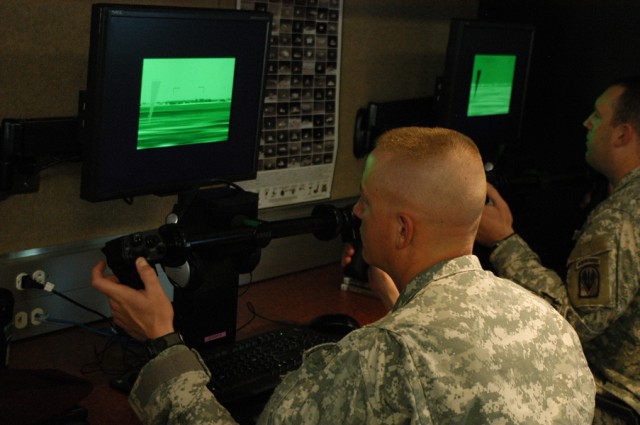"We own the night." This slogan, popular with Special Forces units, has become synonymous with U.S. military technological superiority. Night vision systems, laser-guided munitions, mobility and firepower have converged in the 21st century to allow U.S. forces to "own" the battlefield both day and night.
The Long-Range Advance Scout Surveillance System, now in its second generation, has been fielded with units across the Army. Joint Readiness Training Center's Operations Group conducted training on the system March 16-18. The purpose of the training was to "improve the scope of what JRTC has to offer," said Sgt. 1st Class Robert Frost, Task Force 3 operations NCO.
Frost attended the training with 15 fellow JRTC NCOs. "Now I can tell a Soldier who has an LRAS3 on his vehicle that he's not doing something correctly, and I can show him what 'right' looks like," he said.
The LRAS3 is a long-range, multi-sensor system used by scouts. It provides the real-time ability to detect, recognize, identify and geo-locate distant targets. The LRAS3 enables Soldiers to conduct 24-hour reconnaissance and surveillance missions, while remaining outside threat acquisition and engagement ranges.
It replaces obsolete systems that require scouts to close within direct fire range of the threat they seek. Targets can be detected at 20 kilometers and identified at twice the distance possible with legacy equipment.
Product Manager Forward Looking Infrared provided the training, which was conducted in a state-of-the-art mobile trailer parked on North Fort. Steve Kim, a trainer with PM FLIR, explained that the JRTC NCOs were receiving the "leaders version" of the training.
"They have been quick to pick up on the concepts and skills involved in the training," he said. The Soldiers, using simulators in the trailer, learned their way around the buttons of the LRAS3 on the first day, and got hands-on experience with the actual equipment on day two. The third day culminated with the Soldiers executing advanced scenarios on the simulators.
The training was beneficial for the JRTC NCOs. "There was not enough technical knowledge of the LRAS3 system in Operations Group to train rotational units on their employment," Frost said. "There are Soldiers in this course who have experience with the system who have learned even more about it and how to employ it." The effort to improve JRTC's training is continuous, and when the NCOs learned new things about the LRAS3, they validated that effort.
"The idea is to stay relevant," Frost said. "Within six months of returning from theater, things have changed over there -- equipment, tactics -- it all changes rapidly. Training events like this one help us stay relevant and able to train, mentor and lead."


Social Sharing